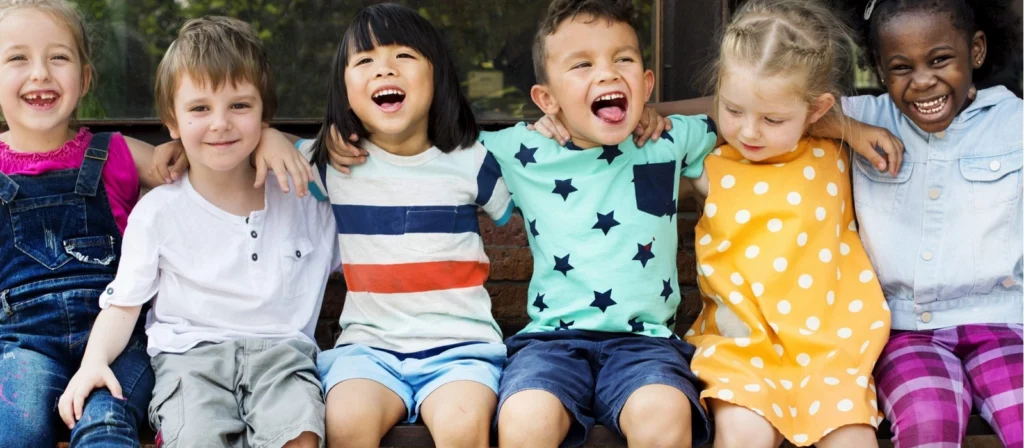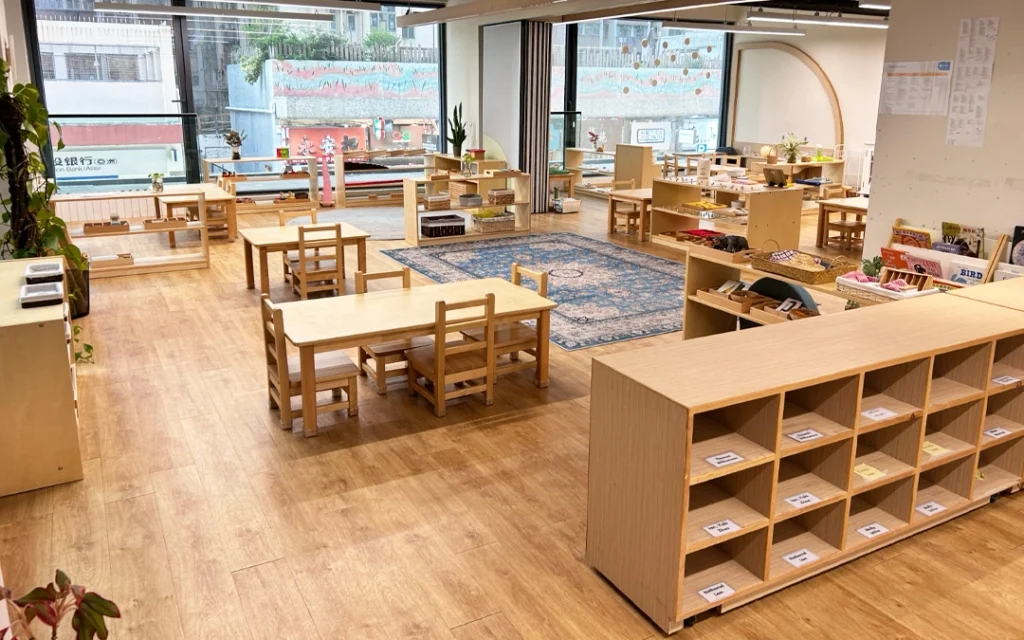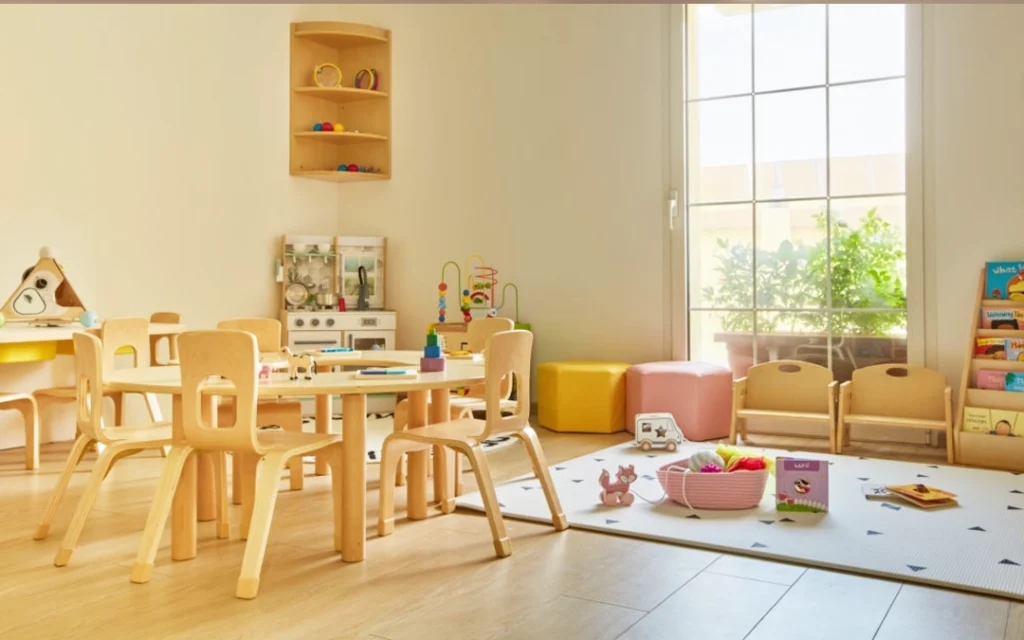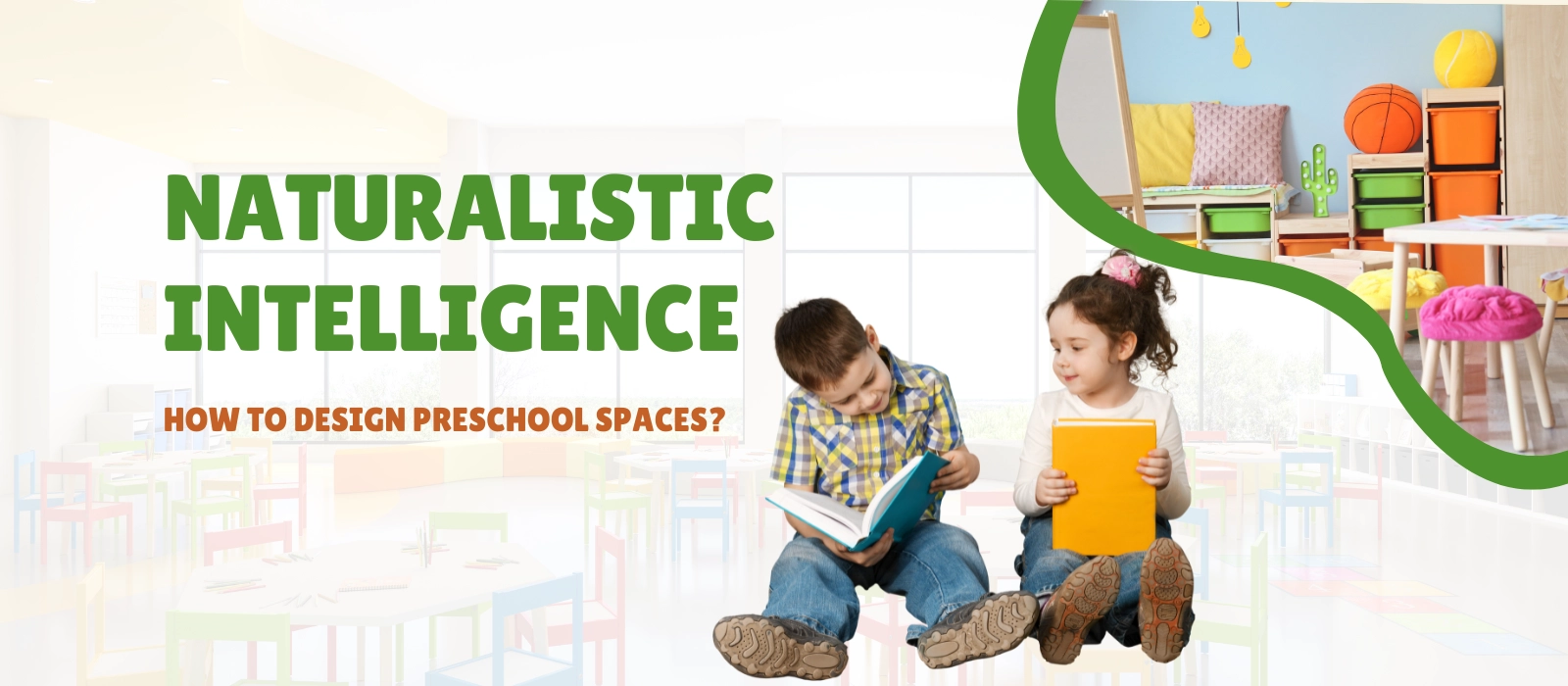Naturalistic Intelligence is not a slogan in our company; it is my design brief. As the CEO of XIHA Furniture and a factory owner who visits classrooms from Shenzhen to Toronto, I see one truth: space teaches. When we shape space well, children notice patterns in leaves, clouds, soil, and seasons—without worksheets, without prompts. They look closer. They compare. They care.
In Gardner’s Multiple Intelligences, Naturalistic Intelligence describes the ability to recognize, classify, and reason about living systems and natural phenomena. In early years, it shows up as naming plants, sorting seeds by texture, comparing shells, predicting weather, and caring for classroom plants and insects. I treat this not as an abstract theory but as a concrete performance target for the room.
Design either invites that behavior—or blocks it. A beautiful room can still fail if children cannot reach the specimens, if light is poor, if there is no place to handle soil or water safely, or if storage hides the very items we hope they will study. Conversely, a modest room can excel if the furniture is scaled, the zones are clear, and the materials are honest and tactile.
Here is my thesis for this article. To grow Naturalistic Intelligence in preschool, we must align three levers: materials, zoning, and routines. Materials that feel like nature—real wood, natural fabrics, living plants. Zoning that flows—discovery, care, reflection. Routines that ritualize observation—daily watering, specimen labeling, seasonal displays. Get these right, and the curriculum starts to teach itself.
You will find this guide practical. I will define Naturalistic Intelligence in simple, observable terms. I will show why it matters for language, attention, and self-regulation. Then I will map design moves—light, color, surfaces, storage, and child-scaled workstations—plus the safety standards that keep everything compliant and durable in real classrooms.
Finally, I will share the decisions we make on our factory floor: edge radii that protect little hands, clear finishes that meet EN71/ASTM/CPSIA, hardware that resists tipping, and modular pieces that let you evolve the room with the seasons. Our clients in North America, Europe, and Australia push us to prove the details. That pressure has made us better.
Naturalistic Intelligence: Definition and Early Years Relevance
Working definition of Naturalistic Intelligence
Naturalistic Intelligence, in Gardner’s Multiple Intelligences, is the capacity to notice, classify, and reason about living systems and natural patterns. When I define Naturalistic Intelligence for our design and education teams, I keep it practical: a child identifies what something is, how it is similar or different, and what it needs to thrive. That is the naturalistic intelligence meaning I design for in real classrooms. It is not just liking animals or walks outside; it is disciplined observation, comparison, categorization, and care.
Observable behaviors in ages 3–6
In early childhood, Naturalistic Intelligence appears in small, repeatable behaviors. A child groups leaves by edge shape without prompts. Another separates stones by texture and color, then states the rule behind the grouping. A third waters the spider plant and checks soil moisture before deciding whether to add more. These are authentic examples of naturalistic intelligence because they show classification, pattern recognition, and stewardship.
Simple assessment lenses: notice, organize, care
I walk rooms with three lenses:
- Notice — Can the child name or point out differences (leaf veins, seed size, shell spirals)?
- Organize — Can the child sort by one rule, then switch rules (size → texture)?
- Care — Does the child follow routines that sustain life (watering, misting, gentle handling)? When those three are present, we are witnessing naturalistic intelligence examples in action. If only one appears (e.g., naming without organizing), I adjust materials or prompts.
Look‑fors during walkthroughs
- Children explain why objects belong together (“These are smooth; these are ridged”).
- Children predict outcomes (“This seed needs more light; it sprouted near the window”).
- Children revise categories after new evidence (“The shell is chalky; let’s move it”).
- Children use care language (“It needs water today; the soil is dry”).
- Children pose questions about habitats and cycles (“Where do these insects go in winter?”).
Environmental factors that unlock Naturalistic Intelligence
Prepared space matters as much as the child. If specimens sit too high, lids are tight, or labels are tiny, children hesitate. If the table surface is glossy and slippery, sorting is frustrating. If light is dim, leaf venation is invisible. When we fix basics—height, friction, light—competence rises.
Misconceptions to avoid
- “It’s only science time.” Naturalistic Intelligence also builds language (rough, smooth, serrated), math (sets, attributes), and SEL (patience, care).
- “It requires a garden.” A garden helps, but a prepared indoor environment can be rich: terrariums, seed jars, soil trays, dried flowers, shells.
- “It’s messy and unsafe.” With trays, mats, and clear routines, work stays clean and compliant; safety is a design outcome, not an excuse to avoid nature.
Micro‑assessments and portfolios
Use play‑like tasks that yield reliable signals:
- Classification drill: present 10 mixed natural objects; ask the child to sort “in a way that makes sense.” Track time, rule clarity, and ability to switch rules.
- Observation sketch: trace a leaf on the light table; notice veins, edges, symmetry; count and celebrate vocabulary used.
- Care routine log: children mark a watering calendar and check soil moisture with a simple card scale (dry → damp → wet), then explain their choice. Artifacts from these tasks form a lightweight portfolio that demonstrates naturalist intelligence development without formal testing.
Inclusion and accessibility
Not every child is comfortable with insects; some have allergies or limited vision/mobility. Adapt with larger sorting pieces, tactile boards sealed for safety, closed terrariums, and photo cards for learners who prefer images. The goal is access to Naturalistic Intelligence for every child without pressure.
Language that scaffolds thinking
Model precise but short language: “This leaf edge is serrated.” “These seeds are heavier.” “Let’s group by habitat.” Over time, define naturalistic intelligence becomes a lived classroom vocabulary; children use terms to reason and to persuade peers.
Program value for directors
Spaces designed for Naturalistic Intelligence increase engagement without constant adult prompting. That reduces behavior redirection and protects teacher energy. It also makes learning visible to families—sorted trays, labeled specimens, growth charts—strengthening trust and enrollment. For procurement leads, visibility is a measurable return on investment.
Why Naturalistic Intelligence Matters in Preschool Learning
Naturalistic Intelligence is not a niche talent; it is a powerful driver of attention, language, and social responsibility in the early years. When children sort seeds, watch condensation, or care for a plant, they practice core habits of mind that generalize to reading, math, and self‑regulation. Well‑designed environments make this practice daily and effortless.

Cognition and attention
Nature‑rich tasks regulate the nervous system. Observing a snail or tracing leaf veins requires quiet focus, sustained attention, and inhibition of impulses. This is the same executive control children need for listening during circle time and for early literacy. Classifying natural objects adds working‑memory load in the right way: children must hold a rule in mind and test new items against it. A pragmatic metric we use is a simple timer at the science table: average uninterrupted engagement per child rises as the environment improves.
Short daily routines amplify the effect. Two minutes of observation sketching on the light table before free play builds stamina. A weekly “specimen talk” where one child explains a sorting rule strengthens both attention and reasoning. Over a month, we often see fewer behavior redirections in these zones because the work is intrinsically absorbing.
Language and early scientific thinking
Naturalistic Intelligence grows precise language. Children need words such as serrated, smooth, translucent, moist, habitat, and germinate to describe what they see. That vocabulary transfers to writing and storytelling. I coach teachers to pair a material with a micro‑script: “Name it, describe one attribute, and tell what it needs.” The triad lifts both expressive language and causal reasoning.
The same activities introduce the logic of science without formal labs. Children generate categories, test predictions (will this seed sprout with less light?), and revise ideas when evidence shifts. They learn that explanations should match observations. When a child moves a shell to a different group after noticing its chalky surface, that is an everyday example of hypothesis revision.
Social‑emotional learning and stewardship
Caring for living things cultivates empathy and responsibility. Watering, misting, and gentle handling make kindness visible. Shared jobs—“leaf check,” “water monitor,” “label writer”—build collaboration and pride. In classrooms with diverse learners, stewardship roles provide status for children who may not yet shine in literacy or numeracy, improving belonging.
Stewardship also connects school to family life. Children carry routines home: noticing plant needs on a balcony, sorting stones with a sibling, pointing out seasonal changes on a walk. Families then see learning as practical and continuous, not limited to worksheets.
What success looks like in six weeks
- Longer independent work at the science table (target: +2–4 minutes average per child).
- Richer descriptive language in journals and specimen labels (track new words per week).
- Clearer explanations during share time (because, so, needs to, similar/different).
- Consistent care routines with fewer adult reminders (watering log completion ≥80%).
Designing Preschool Spaces & Furniture for Naturalistic Intelligence
Naturalistic Intelligence flourishes when the room itself behaves like a quiet co‑teacher. My rule is simple: children should be able to discover, care, and reflect without asking an adult for permission or reach. That means zoning for movement, sightlines for supervision, and furniture that invites hands‑on classification work.

Zoning: discovery, care, reflection
I start with three zones. Discovery is where children handle and sort specimens—stones, leaves, shells, seed pods. Care is where living things are maintained—watering, misting, pruning, soil checks. Reflection is where children draw, label, and compare, often near a window or light table. Each zone has a clear boundary but remains visually connected so ideas flow between them. Place discovery near durable flooring and a sink if possible. Keep care beside natural light and away from high‑traffic doors. Position reflection where children can sit longer with good light and low noise.
Circulation matters. Leave at least a one‑meter walkway behind work tables to prevent bumps during sorting. Keep the discovery zone clear of the entrance so new arrivals do not jolt delicate work. Use low shelving to preserve sightlines; adults can supervise multiple zones at once without hovering.
Furniture system: child‑scaled workstations
For ages 3–6, I specify seat heights in the 260–300 mm range, paired with table heights roughly 460–520 mm. This keeps elbows near ninety degrees for sorting and drawing. A science table needs a matte, non‑glare surface so small items stay put; we favor birch plywood with a low‑VOC clear coat. Add raised lips or removable trays to contain seeds and pebbles. A terrarium or observation table should have tempered glass inserts, vented lids, and lockable casters so teachers can reposition it while cleaning.
The light table is a workhorse for Naturalistic Intelligence. Use warm‑white LEDs with dimming so leaf venation and insect wings are visible without glare. Provide translucent sorting dishes and black background cards so contrast is adjustable. If possible, pair the light table with a wall‑mounted peg rail holding brushes, droppers, and magnifiers at child reach.
Water and soil require purpose‑built stations. We build shallow, removable tubs with graduated marks so children can measure water rather than pour blindly. A side drain and towel rack keep routines clean. For soil, include a wide‑rim tray, a small scoop, a moisture meter with a simple color scale, and sealed containers for potting mix. These stations make stewardship predictable, which is where Naturalistic Intelligence becomes habit rather than event.
Materials and finishes that feel like nature
Children read authenticity through touch. Real wood, cork, cotton, and stone surfaces communicate that the classroom respects the natural world. We use European birch or rubberwood from responsibly managed sources, finished with clear, low‑VOC coatings that meet early‑childhood requirements. Fabrics for seating and floor mats should be textured enough for grip yet easy to wipe. Avoid mirror‑gloss laminates on worktops; they make sorting frustrating. Where durability demands laminate, choose matte finishes in earth tones so the palette stays quiet and the specimens remain the star.
Hardware choices also shape behavior. Soft‑close hinges prevent pinches. Full‑extension runners let children pull out a specimen tray and see every item without digging. On tall pieces, add wall anchors and internal ballast to improve tip resistance. Handles should be large and friendly to small hands; finger holes are intuitive and reduce snagging compared to protruding pulls.
Storage, labeling, and tools for classification
If you want Naturalistic Intelligence to show up daily, make the taxonomy visible. I specify open shelves with shallow, uniform trays labeled by attribute: texture, color, pattern, habitat, season. Start with two or three attributes only; complexity grows with the group. Provide a label maker and picture cards so pre‑writers can still participate. Keep magnifiers (3–5×) in a consistent bin near discovery. Include clipboards, pencils, and narrow washi tape for temporary labels during sorting.
I also like a simple “question board” at child eye level: What changed? What stayed the same? What do we need to care for this? These prompts turn moments of curiosity into documentation. Next to it, mount a narrow rail for specimen jars so children can post a find with a name card. Over time, the rail becomes a living index of the season.
Lighting and acoustics finish the job. Use daylight first, then supplement with high‑CRI LEDs to reveal true color in leaves and stones. Add felt panels or cork pinboards to absorb noise around the discovery zone; quiet supports concentration during fine sorting work. In reflection areas, offer a mix of seating: small benches for pairs, stools for quick sketches, and floor cushions for children who prefer low posture while drawing patterns.
Placement checklist I give to site teams
- Discovery zone within easy reach of sink or cleanup area; floor protection under trays.
- Care zone near daylight; plants selected for non‑toxicity and durability; watering tools sized for small hands.
- Reflection zone with stable light and storage for journals, labels, and specimen cards.
- Low shelving for sightlines; wall anchors and anti‑tip hardware on taller units; casters locked during use.
When these components align, Naturalistic Intelligence ceases to be an occasional activity. It becomes the room’s default setting. Children begin to organize the world as a habit, and the furniture fades into the background—doing its quiet work every day.
Safety and Compliance in Nature-Rich Classrooms
Naturalistic Intelligence thrives only when families and regulators trust the environment. I design from the standard up, not from the mood board down. That means known materials, traceable finishes, age‑appropriate tools, and routines that keep soil, water, and living things safe for daily use.

Standards and materials compliance
Start with the big four. For North America, furniture and manipulatives in the science corner should meet CPSIA requirements for lead, phthalates, tracking labels, and age grading. Wood composites and plywood must comply with EPA TSCA Title VI (formaldehyde emissions) or CARB Phase 2. For Europe, apply EN71 parts 1–3 for mechanical, flammability, and migration of certain elements. Many clients also ask us to align with ASTM F963 for additional mechanical and chemical safety criteria. Keep declarations, test reports, and lot numbers on file so audits are painless.
Finishes matter. Use low‑VOC clear coats; request a full SDS and a statement on heavy metals and plasticizers. Where we specify laminates for durability, I choose matte, low‑gloss finishes to reduce glare and micro‑slips during sorting. Adhesives should be formaldehyde‑free where feasible. Fabrics and soft elements must be cleanable with neutral detergent and, if needed, an approved disinfectant without color bleed.
Specimens and fillers deserve the same scrutiny. River stones, shells, and seed pods should be washed, dried, and inspected for sharp edges. Avoid real bird eggs, feathers, or nests unless sourced and sterilized through approved channels. Potting mix must be sealed between uses; choose mixes with clear labeling and avoid reclaimed soil in classrooms. If you install a terrarium, specify tempered glass, vented lids, and locking mechanisms beyond preschool reach.
Bio‑safety, hygiene, and allergens
Naturalistic Intelligence invites contact with living matter. Plan the hygiene. Mount a dedicated hand‑wash station or keep a portable hand‑washing caddy within arm’s reach of discovery and care zones. Post simple visual cues: wash before and after handling specimens; no food in the science area; tie hair back when using water trays.
Separate tools by task. Use color‑coded brushes, droppers, and towels for water, soil, and terrarium care to prevent cross‑contamination. Dry tools on a ventilated rack; damp cloths breed odor and mold. Clean high‑touch surfaces daily with a neutral detergent; disinfect weekly or when contamination occurs, following contact times on the product label. Record a quick checklist so routines survive staff turnover.
Plants and insects require a toxicity screen. Choose hardy, non‑toxic plants such as spider plant, pothos kept out of chewing range, or herbs like mint and basil for scent work. Avoid species listed as toxic to children or pets. If you keep insects, select contained species that cannot sting, bite, or trigger infestations, and agree on humane care and release protocols. Collect family allergy notes during enrollment and flag them on the class roster.
Choking hazards are non‑negotiable. Any small object that fits into a standard small‑parts cylinder (about 31.7 mm diameter × 57.1 mm depth) must be managed for children under three and used with supervision for mixed‑age groups. Prefer larger specimens for sorting and keep tiny items in teacher‑only bins. Label trays with the intended age group.
Physical safety: stability, water/soil, and electrical
Furniture should forgive mistakes. Round exposed edges to at least 2–4 mm radii. Use wide bases, wall anchors on tall units, and internal ballast where appropriate to resist tipping. Fit casters with reliable brakes and a clear lock/unlock icon. Test stability with loaded trays, not empty shelves, because classification work adds weight to the front of a unit.
Water and soil are wonderful teachers but messy colleagues. Place trays over waterproof mats or a low lip worktop. Add towel bars and a spill kit so cleanup is routine, not drama. Keep electrical items—light tables, pumps for enclosed habitats—rated and marked for classroom use. Specify UL/ETL or CE compliance, strain‑relieved cords, covered switches, and IP ratings appropriate for occasional splashes. Route cables along furniture undersides with clips, not across the floor.
Live habitats need air but not escape routes. Use fine mesh vents, child‑safe latches, and secondary containment for feeder materials. Post a short care card at adult eye level with daily and weekly tasks; consistency protects animals and children alike.
Acoustics and lighting affect safety indirectly. Softer rooms lower impulsivity; good light reduces eye strain and mis‑sorting. Add pinboards or felt panels around discovery to dampen noise. Use high‑CRI, flicker‑free LEDs; dimmable fixtures reduce glare on glossy leaves and wet stones.
Quick compliance checklist I give to site teams
- Current test reports for CPSIA, EN71, ASTM F963, and TSCA Title VI on file.
- Low‑VOC finishes and adhesive declarations available by lot number.
- Small‑parts policy visible; age‑graded trays labeled; teacher‑only bins secured.
- Anchored tall units; anti‑tip hardware; locking casters; edge radii verified.
- Hand‑wash access within the zone; color‑coded cleaning kit; weekly log updated.
- Plant/insect toxicity screened; allergy list posted discreetly.
- Electrical items UL/ETL or CE marked; cords routed; IP rating checked near water.
With these safeguards in place, Naturalistic Intelligence becomes a daily, low‑risk practice. Families see care and competence. Inspectors see documentation and control. Teachers see calm, purposeful work.
Conclusion
Naturalistic Intelligence becomes durable when space, furniture, and routines pull in the same direction. A room that invites children to discover, care, and reflect every day does more than host activities; it quietly teaches taxonomy, language, and stewardship. The practical levers are now clear: honest materials, clean zoning, child‑scaled workstations, and simple routines that make observation habitual.
From a design standpoint, the details do the teaching. Matte, non‑glare surfaces keep tiny specimens stable. Light tables reveal structure. Water and soil stations turn care into procedure. Open shelves, shallow trays, and clear labels make classification visible. High‑CRI lighting and soft acoustics reduce cognitive load. When these choices are anchored to safety and compliance—CPSIA, EN71, ASTM F963, TSCA Title VI—Naturalistic Intelligence can thrive without friction for teachers, families, or inspectors.
As the CEO of XIHA Furniture, I build classrooms around that promise. We manufacture biophilic, standards‑compliant preschool furniture on five production lines, with factory‑level QC, AQL inspections, and documented finishes. Our team supports you end‑to‑end: CAD layouts for discovery/care/reflection zones, specification sheets, material swatches, anchoring kits, and simple maintenance playbooks. We ship to North America, Europe, and Australia, plan around school calendars, and keep timelines realistic so learning spaces are ready before day one.
If you want Naturalistic Intelligence to be the daily heartbeat of your preschool, we will design and build the environment to make it happen—on spec, on time, and within budget. Write to me at info@xihafurniture.com and let’s map your space together.



